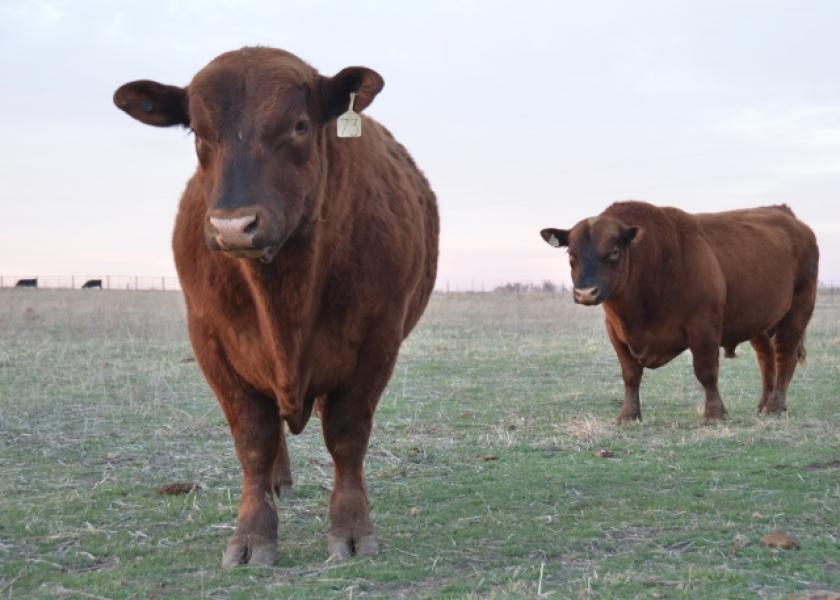The Impact of Bull Selection – Part 2

Last week I left you with the question: Which bull transmits more profit potential to this operation? Before the answer, a brief recap of the example:
In a herd using bulls as rotational sires, selecting the best 20% of heifers to develop as replacements, and selling all other calves at weaning, with the following levels performance:
- 1,400 pound average mature cow weight
- 85% pregnancy rate
- 82% calf crop weaned
- Average weaning weight 500 pounds
- Pounds of Calf Weaned/Exposed Female = 410
This data indicates that improving the Pounds of Calf Weaned/Exposed Female on a whole herd basis results in more profit potential of this operation.
Average genetic values of five bulls that sired the existing cowherd:
- WW HP Milk MW
Average: 71 9 20 88
Now we consider the genetic values of two new potential herd bulls.
New Herd Bull 1 71 15 20 68
New Herd Bull 2 101 9 20 122
What should we expect if we fast forward 5 – 6 years?
If we select Bull 1
- 1,380 pound average mature cow size
- 91% pregnancy rate
- 88% calf crop weaned
- Average weaning weight 500 pounds
- Pounds of Calf Weaned/Exposed Female = 440
If we select Bull 2
- 1,434 pound average mature cow size
- 85% pregnancy rate
- 82% calf crop weaned
- Average weaning weight 530 pounds
- Pounds of Calf Weaned/Exposed Female = 434.6
So if this was a 100 cow operation, by the next generation:
If we select new sire 1, we would be selling 79 weaned calves (44 steers & 35 hfrs) at 500 pounds = 39,500 pounds of weaning pay weight
If we used new sire 2, we would be selling 74 weaned calves (41 steers & 33 hfrs) at 530 pounds = 39,220 pounds of weaning pay weight
Furthermore, the lighter weight calves would be worth more $/pound, and 1,380 pound cows would cost less in feed and maintenance than 1,434 pound cows.
The Answer
Bull 1, because of the genetic potential to improve fertility, reduce mature cow size and maintain the current level of weaning growth, adds more profit potential to the operation.
Dr. Mark Johnson discusses weighing genetic options when selecting a bull on SunUpTV. http://sunup.okstate.edu/category/ccc/2022/030522-ccc
Related stories:







